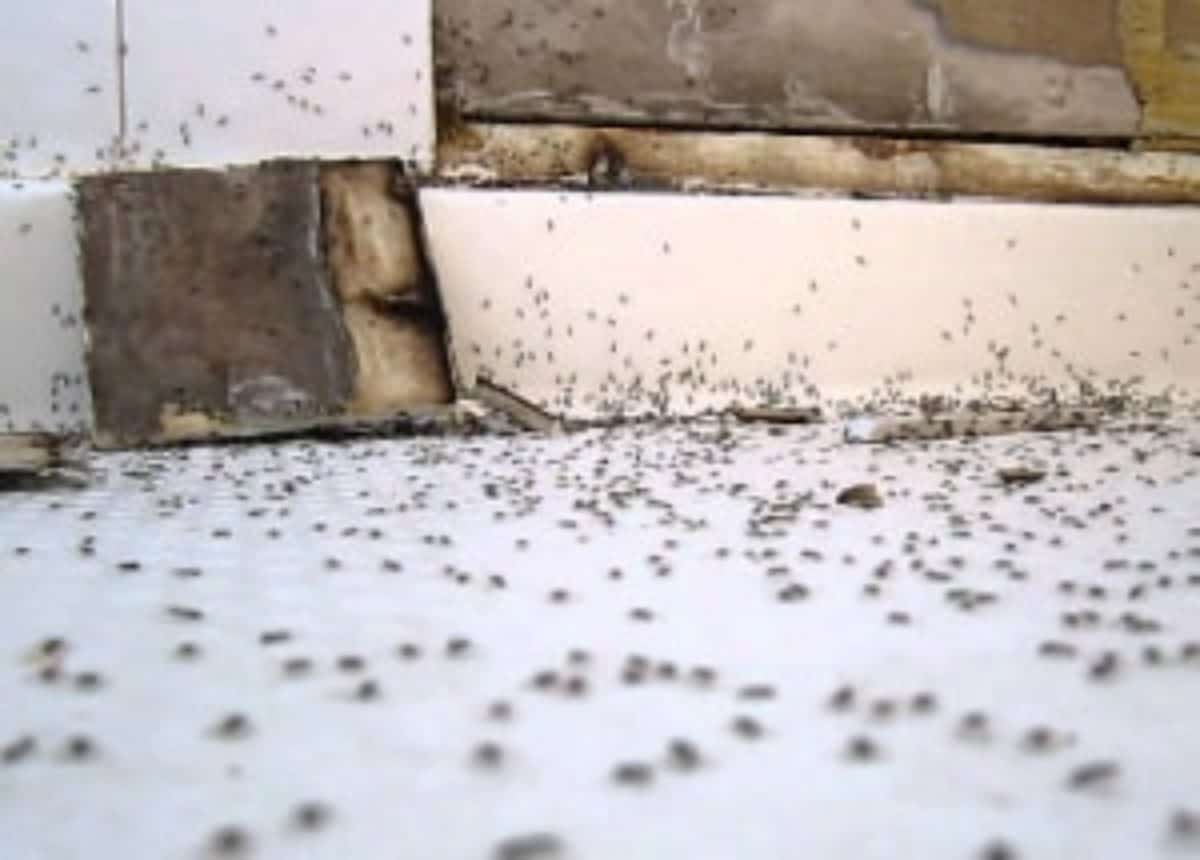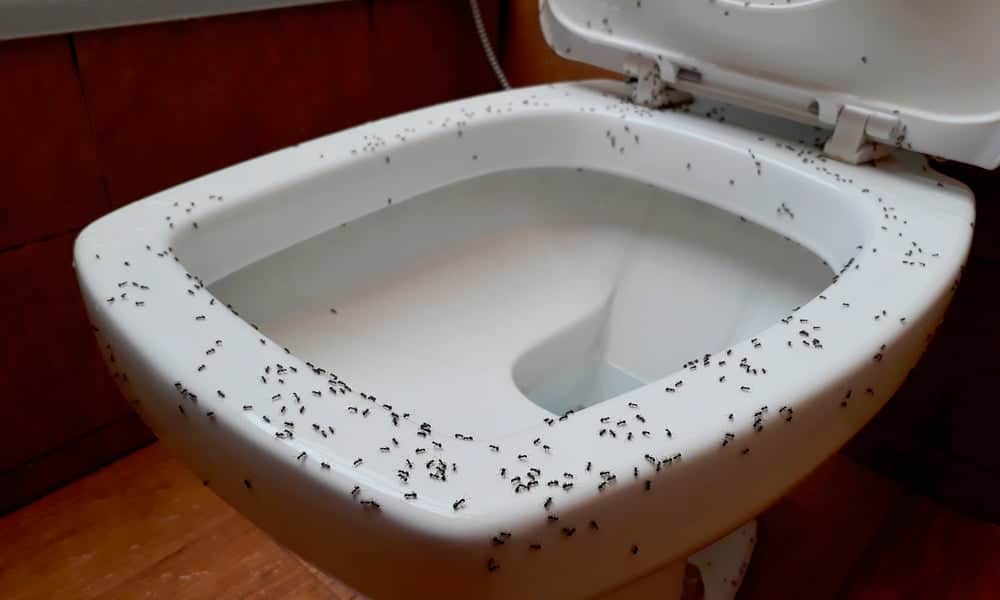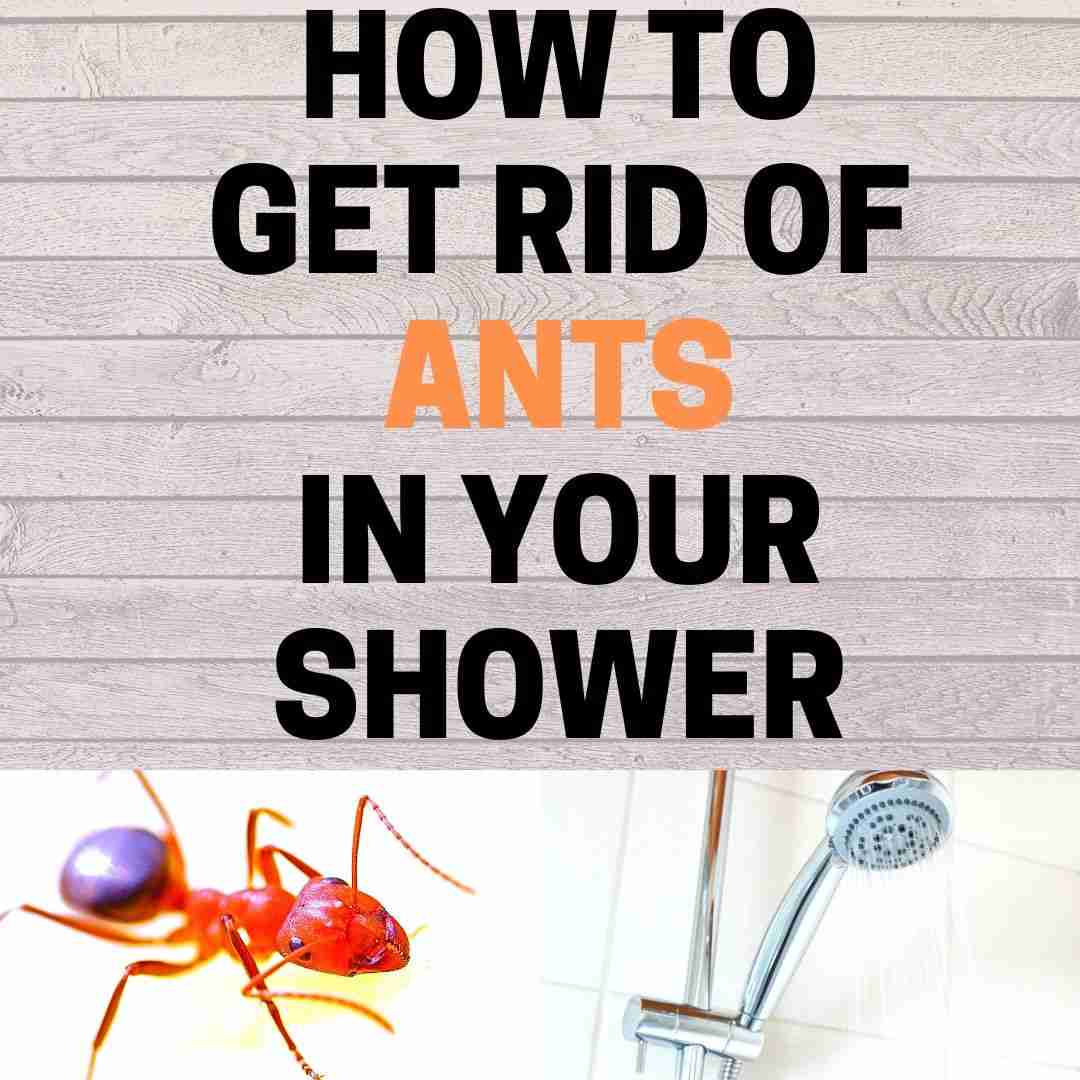Ant Biology and Behavior: Ants In Bathroom Shower

Ants, despite their small size, are fascinating creatures with complex social structures and remarkable abilities. Understanding their biology and behavior is crucial for effectively managing ant infestations, especially in areas like bathrooms.
Life Cycle of Common Bathroom Ant Species
The life cycle of common bathroom ant species, such as the odorous house ant or the pavement ant, involves four distinct stages: egg, larva, pupa, and adult. The queen ant lays eggs that hatch into larvae, which are fed and cared for by worker ants. The larvae molt several times and eventually enter the pupal stage, where they develop into adults. This cycle can take several weeks or months, depending on the species and environmental conditions.
Factors Attracting Ants to Bathrooms, Ants in bathroom shower
Bathrooms are often attractive to ants due to a combination of factors that provide them with essential resources.
- Moisture: Bathrooms are typically humid environments, offering ants a source of water, which is crucial for their survival. Leaky pipes, condensation, or even damp towels can attract ants.
- Food Sources: Ants are omnivores and can feed on a variety of food sources found in bathrooms. These include crumbs, spills, toothpaste, hair products, and even decaying organic matter.
- Shelter: Bathrooms can provide ants with suitable nesting sites. Cracks in walls, under sinks, or even behind tiles can offer them protection from predators and harsh weather conditions.
Foraging Patterns of Ants in a Bathroom Environment
Ants typically follow established trails, often referred to as “ant highways,” to navigate their environment and find food sources. These trails are marked with pheromones, chemical signals that allow ants to communicate with each other and guide their colony members to food. In a bathroom, ants might forage along baseboards, around the edges of sinks, or under cabinets, following these pheromone trails to access food and water.
Ant Communication and Recruitment
Ants communicate through a variety of methods, including pheromones, tactile contact, and even sound. Pheromones are crucial for recruitment, as ants use them to signal the location of food sources and alert other ants in the colony. When an ant finds a food source, it lays down a pheromone trail leading back to the nest, guiding other ants to the location. This recruitment behavior allows the colony to efficiently exploit food sources and maximize their foraging efforts.
Common Ant Species in Bathrooms

Bathrooms, with their constant access to water and potential food sources, can become attractive to various ant species. Understanding the common types of ants that frequent these spaces can help homeowners identify and address potential infestations.
Identifying Common Ant Species
Ants are social insects that live in colonies. Each colony has a queen, workers, and sometimes males. Different ant species have distinct physical characteristics and behaviors. Here’s a breakdown of some common ant species found in bathrooms:
| Ant Species | Common Name | Physical Characteristics | Typical Behavior |
|---|---|---|---|
| Lasius niger | Black Ant | Small, black, and shiny. Workers are about 3-4 mm long. | Commonly found in kitchens and bathrooms. They are attracted to sugary foods, grease, and crumbs. They often build nests in walls and under floors. |
| Tetramorium caespitum | Pavement Ant | Small, brown, and shiny. Workers are about 2-3 mm long. | Often found in outdoor areas but can enter homes through cracks and crevices. They are attracted to sugary foods, grease, and dead insects. They build nests in soil, under rocks, and in cracks in concrete. |
| Tapinoma sessile | Ghost Ant | Small, light brown to yellowish. Workers are about 1-2 mm long. | They are often found in bathrooms and kitchens. They are attracted to sugary foods, grease, and dead insects. They build nests in walls, under floors, and in cracks and crevices. |
| Monomorium pharaonis | Pharaoh Ant | Small, light yellow to reddish-brown. Workers are about 1-2 mm long. | They are often found in hospitals, restaurants, and homes. They are attracted to sugary foods, grease, and dead insects. They build nests in walls, under floors, and in cracks and crevices. |
Preventing and Eliminating Ant Infestations

Ants in the bathroom can be a nuisance, but with proper prevention and control methods, you can keep these unwelcome guests at bay. Understanding their behavior and creating an unfavorable environment for them is key to achieving ant-free living.
Preventing Ant Infestations
Preventing ant infestations starts with eliminating their entry points and food sources. Ants are attracted to moisture, food crumbs, and sugary substances. By sealing cracks and crevices, cleaning up spills promptly, and storing food in airtight containers, you can significantly reduce the chances of an infestation.
- Seal cracks and crevices: Ants can squeeze through the tiniest openings. Inspect your bathroom for any cracks in the walls, floor, or around pipes. Seal these openings with caulk, expanding foam, or weather stripping.
- Remove food sources: Ants are attracted to food crumbs, spills, and even toothpaste. Clean up spills immediately, store food in airtight containers, and keep countertops and floors clean.
- Maintain a clean and dry environment: Ants thrive in moist environments. Ensure proper ventilation in your bathroom, and wipe down surfaces after showering or bathing. Avoid leaving wet towels or clothes on the floor.
- Eliminate standing water: Ants are attracted to water. Make sure to empty water-filled containers like flower vases and pet bowls. Repair leaky faucets and pipes promptly.
Eliminating Existing Ant Infestations
If you have an ant infestation, there are several effective methods to eliminate them. From baits to traps to natural remedies, the choice depends on the severity of the infestation and your personal preferences.
- Baits: Ant baits contain a slow-acting poison that ants carry back to their nests, killing the entire colony. Baits are effective for larger infestations and can be placed strategically around areas where ants are seen.
- Traps: Ant traps work by attracting ants with a food source and then trapping them. Traps are effective for smaller infestations and are a more humane option than baits.
- Natural remedies: Several natural remedies can be used to deter ants. These include using essential oils like peppermint or citrus, diatomaceous earth, or borax. These remedies are less toxic than chemical pesticides but may not be as effective for large infestations.
Ant Control Methods
Choosing the right ant control method depends on the severity of the infestation, your personal preferences, and environmental considerations.
- Chemical pesticides: Chemical pesticides are effective in killing ants quickly. However, they can be harmful to pets and children and may have negative environmental impacts.
- Natural remedies: Natural remedies are safer for pets and children and have minimal environmental impact. However, they may not be as effective as chemical pesticides and require more frequent application.
- Integrated pest management (IPM): IPM is a holistic approach to pest control that combines prevention, monitoring, and targeted control methods. It aims to minimize the use of pesticides while achieving long-term pest control.
Common Ant Control Products
| Product Name | Active Ingredient | Application Method |
|---|---|---|
| Terro Ant Killer Bait | Fipronil | Bait stations |
| Advion Ant Gel Bait | Indoxacarb | Gel bait |
| Combat Ant Killing Gel | Hydramethylnon | Gel bait |
| Ortho Home Defense Ant, Roach & Spider Killer | Bifenthrin | Spray |
| Raid Ant & Roach Killer | Cyfluthrin | Spray |
Ants in bathroom shower – Those little black ants in the bathroom shower are a real pain, right? They seem to come from nowhere, and you can’t seem to get rid of them. Maybe the problem isn’t your cleaning routine, but the shower itself! If you’re thinking about a bathroom makeover, you might want to consider ikea bathroom shower doors.
They’re stylish, affordable, and might even be more airtight than your old shower, keeping those pesky ants out. Once you’ve got a new shower, those ants won’t stand a chance!
Those little black ants in the bathroom shower are a real pain, right? I bet they’re getting in through a crack in the shower curtain. If you’re in Sri Lanka, you might want to check out bathroom shower curtains sri lanka for some new options.
Maybe a waterproof one would help keep those ants out! After all, a clean shower is a happy shower, and no one wants to share it with ants.